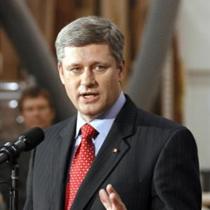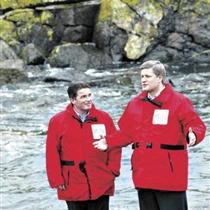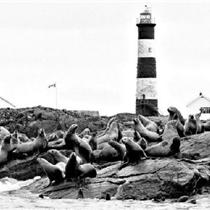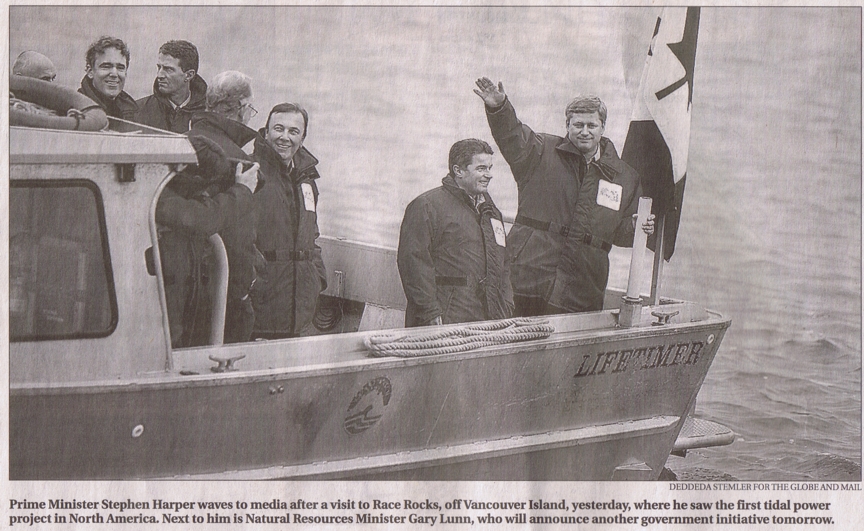In Jan of 2007 the following article was published in the Victoria Times Colonist:
 A beacon of hope for Race Rocks
A beacon of hope for Race Rocks
Carney tries again to win protection for prize lighthouses now withering away, Jack Knox, Times Colonist, Tuesday, Feb06, 2007.
. Over the next two days several e-mails full of documented history came from Dale Mumford who has worked at Fort Rod Hill and Fisgard Lighthouse National Historic Sites for many years. He has provided an update which shows a different interpretation from some of the stories we had collected over the years. So to add to the documented history, we have included his comments and extracts from the original sources here. Fisgard and Race Rocks lighthouses were essentially built at the same time, Fisgard entering service just six weeks before Race Rocks in 1860. In developing exhibits and interpretive programs for Fisgard Lighthouse over the years the staff at the site have had to become very familiar with the early history Fisgard, and of Race Rocks as well. As the two lights were designed to work together, and were the only lights constructed during the colonial period, we try to explain this relationship in programs for visitors (and virtual visitors). To support this work, we have on hand at the sites copies of many original documents regarding the early construction and operation of the lighthouses. We also have an excellent two volume history of the Fisgard Lighthouse and the Early Lighthouse of British Columbia produced on contract for Parks Canada in 1980. Unfortunately as this work was produced primarily as an in-house document for Parks Canada staff, it was printed only in very limited numbers as part of the Parks Canada Manuscript Report Series and has never been widely available to the public.
Ed note: Now these publications have been digitized and are available at the following URLS:
http://parkscanadahistory.com/
http://parkscanadahistory.com/
Mr.Mumford has invited us to have a look at documents in his possession so we certainly will do this in order to try to get to the bottom of what is the correct version of history of the Lighthouse. He goes on with
- ” From these sources, we have been aware that there are a number of inaccurate stories that have been circulating for many years, and have beenrepeated in many books and articles about the original construction of these two lighthouses. It has often been stated that the lighthouses were built by the Royal Navy, and that the lighthouses were designed in Britain and the whole of the building materials were shipped to the colony. In particular with regard to Race Rocks it is often said that all of the stone was pre-cut in Scotland and shipped here like a giant lego set.
- In fact, the primary source documents that have survived from 1858 to 1860, and there are many, make it clear that none of this is true. The British government did provide funding for the construction of the two lighthouses, (7,000 pounds, half as a grant and half as a loan), but the construction and operation of the lights was undertaken under the supervision of the Colony of Vancouver Island, (construction specifically under the direction of the colonial surveyor, Joseph Pemberton) and the lighthouses were constructed by local contractors using local materials. The only materials sent from England were the lanterns (in architectural terms the iron and glass lamp rooms at the tops of the towers) and lighting apparatus and stores. In the case of Race Rocks stone for the lower portion of the tower was initially quarried right on the island!
- The treasury officials in providing the funding specified in a letter to the Colonial office dated April 29, 1859 “…that Sir E.B. Lytton will make Governor Douglas fully aware tht altho’ the Board of Trade will readily afford any advice or information , and will send out from this country the lighting apparatus, they decline undertaking responsibilty as to the selection of the site or the construction of the Towers…” The colonial surveyor, J. Pemberton in his original estimates to Gov. Douglas states he planned to quarry rock on the site. In the estimates dated Aug 23rd 1860 he states: ” That brick would be preferable at Esquimalt, and stone quarried on the spot, at Race Rocks, where the distance from Victoria is greater, the currents more rapid, exposure to weather more and Building stone (bluish Granite) excellent.
- In a report of progress from April 7, 1860 he states “… that sufficient stone has been dressed to build one third of the tower, and enough stone to build the Lightkeeper’s House, and that large quantities of material & stores are safely landed at the Rock. At present there are 12 Stonecutters, 1 cook and one overseer, and on Monday the Contractor proposes to commence building the Keeper’s house.”
- I had heard ( and I’m trying to remember from what source) that the tower was finished in sandstone from the Gulf Islands as they had run out of suitable stone on site. If the granite stone in the tower is not from the site, this represents a change in the original plans for construction, and there is no mention in the papers we have of where else it could have come from. It is clear no one ever intended to send stone from Britain for the purpose. The main source for most manufactured building materials ( including finely dressed lumber) at that time was San Francisco.
- The ballast story doesn’t actually make any sense if you dig deeper. While all sailing ships carried some ballast, this was only removed to lighten the ship for dry docking, carreening or to get it afloat if it ran aground. Ships with no cargo took on extra ballast for the duration of their voyage, but shipping rates to British Columbia during the gold rush were amoung the highest in the world. There was a market here for every concievable comodity and it is very hard to imagine why any ship would have sailed here in ballast at that time. In over 30 years of reading about maritime history, I have never come across a reference to a ship ballasted with granite blocks or bricks. Invariably permanent ballast is referred to as “shingle” ( i.e. heavy beach stones, usually shale etc. easily shovelled ) or pig iron, so I have never bought the ballast story. I’m not saying impossible, just very unlikely and certainly unsupported by any orignal documents I’ve ever seen.
- Mr. John Morris was awarded the contract to build Race Rocks lighthouse.John Wright built Fisgard. Along with Jos. Pembertons Surveyor General, there were five Captains in the original group of Lighthouse Commisioners that choose the specific sites in 1859; Captain Richards, H.M.S.Plumper; Captain Fulford, HMS Ganges; Captain. Moutt HBC steamer Otter, and Captain Cooper and Captain Nagle, Harbour Masters of Esquimalt and Victoria respectively. All this appears in Walbran* and . Note that Walbran does not mention anything about stone from Britain or the navy building the lighthouse. He does say the British government built the lighthouse and correctly provides the amount of the grant/loan.Richards had already identified the need for lights on the Race Rocks group and at the entrance to Esquimalt harbour in his report of Oct. 1858 which accompanied by letters from Gov. Douglas and Rear-Adm. Baynes, had first requested funding be considered for the two lighthouses, so it is sometimes stated that he chose the sites.”
” If you remain sceptical about some of this information, I can hardly blame you as many of these stories have been repeated over and over in many publications.. ”
Dale Mumford,
Fort Rodd Hill and Fisgard Lighthouse National Historic Sites of Canada
- *Walbran,Captain John T.,British Columbia Coast Names 1592-1906 : Their Origin and History. First published by the Government Printing Bureau, Ottawa, 1909
Ed Note: It is interesting how different versions of “history” can arise over the relatively short time of 150 years. There is still some question about the rock being quarried on site. As it seems that many of the blocks of granite that are still existing from the house which was attached at the base of the tower are of grey granite. The only problem is that most of the existing rock that makes up the island of Race Rocks is a black fractured basalt, and not consistent with the type of rock of the area. So the jury is still out on that one until we can determine the type of stone at the base of the tower. (More on this later!) There are several examples of Imperial Lights in the British Empire being built with granite from Great Britain. eg. in New Zealand and in South Africa.
An additional note on the history page also confirms that the crew from the British Naval vessel Topaze assisted in the building of the tower.
On the Canadian Coast Guard Site in “USQUE AD MARE,–A History of the Canadian Coast Guard and Marine Services by Thomas E. Appleton” further support for the theory of the granite rock coming from Britain is included:
- “Between this time and Confederation many light stations were built in Canada, mostly of wooden rather than stone construction, as this was cheaper and more suited to the needs of the country; among notable exceptions, the Race Rocks light tower in British Columbia was constructed of stone which had been quarried and cut in Scotland and sent out by sailing ship around Cape Horn.”

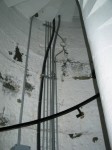
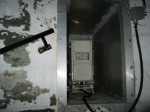

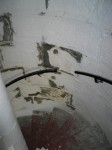
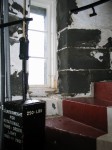
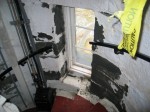
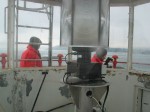
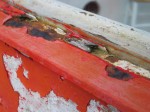
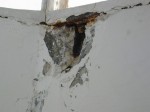
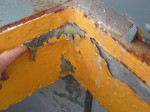
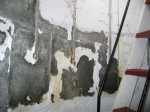
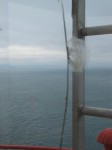
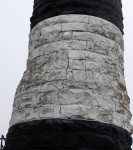
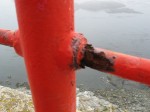
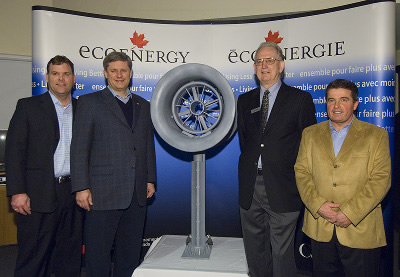
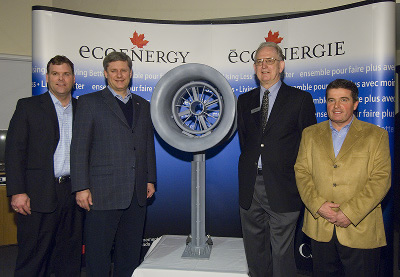
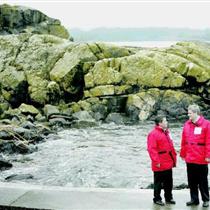
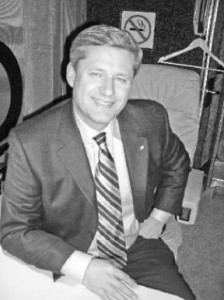 Putting ‘green’ toward going green
Putting ‘green’ toward going green 